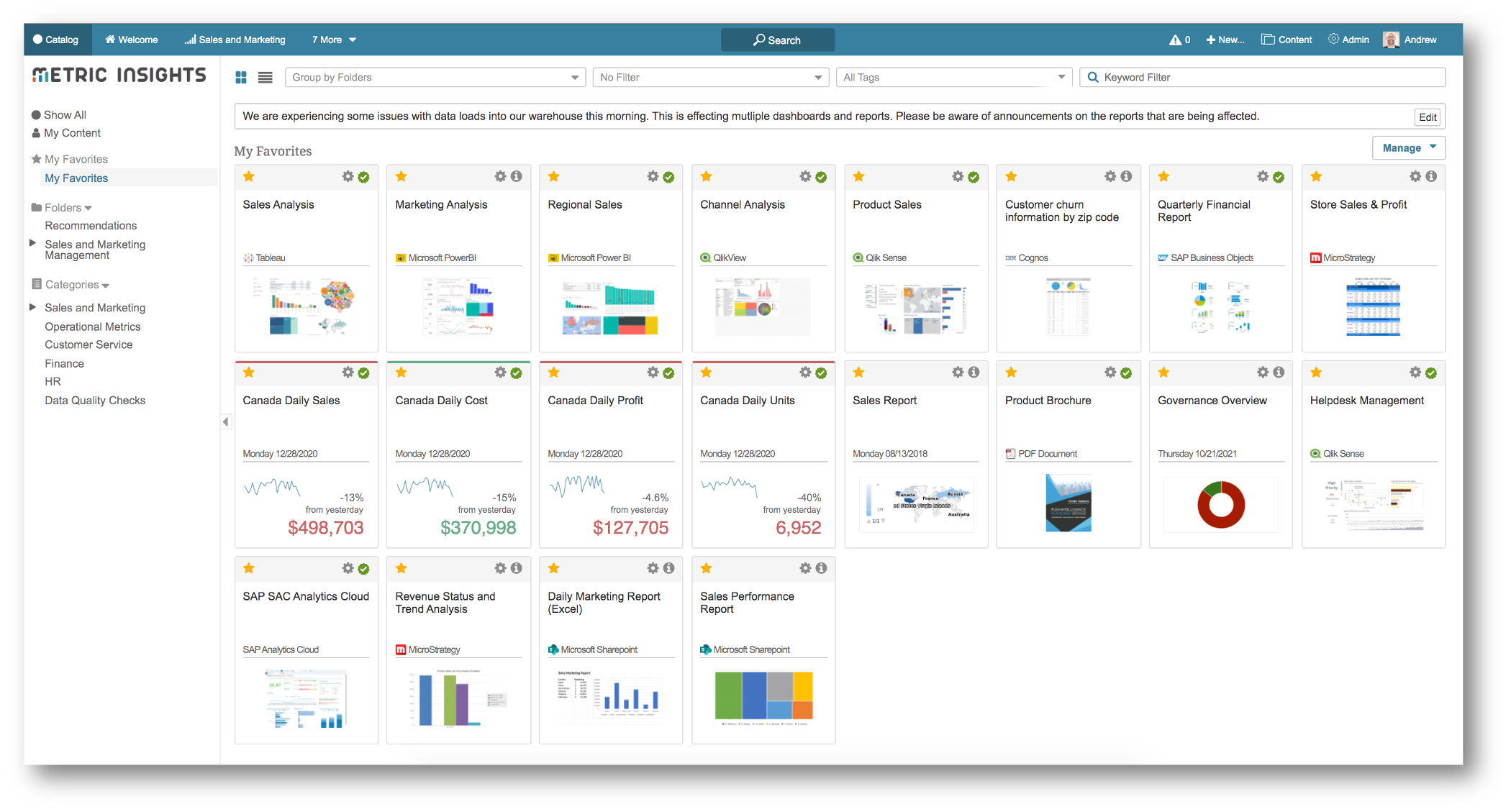Self-Service Analytics
Self-Service Analytics enables non-technical users to quickly locate relevant data and perform their own data analysis without the direct assistance of a BI professional. With a self-service analytics platform, business users are able to independently and directly leverage enterprise analytics solutions freeing up the scarce time of data analysts to perform high-value deep-dive advanced analytics.
 Self-service Portal
Self-service Portal
 Content Certification
Content Certification
 Discoverability & Access Request
Discoverability & Access Request





